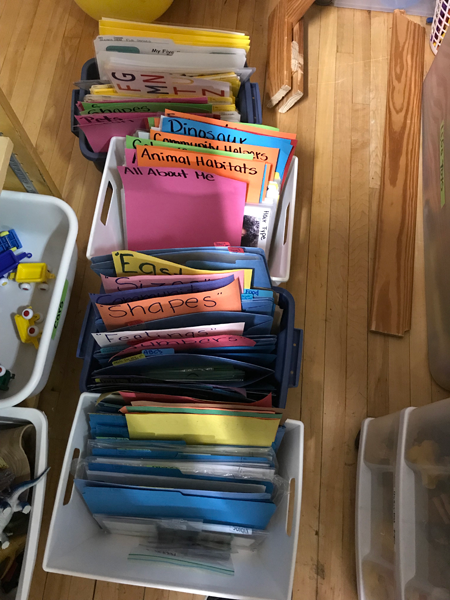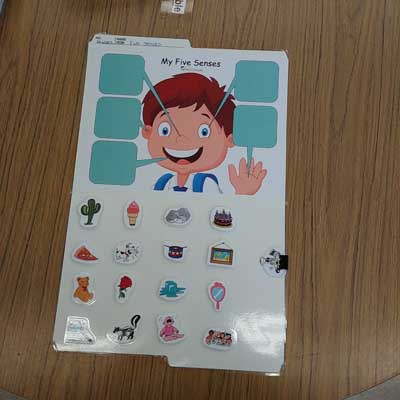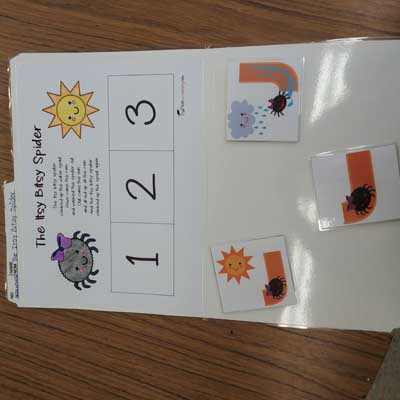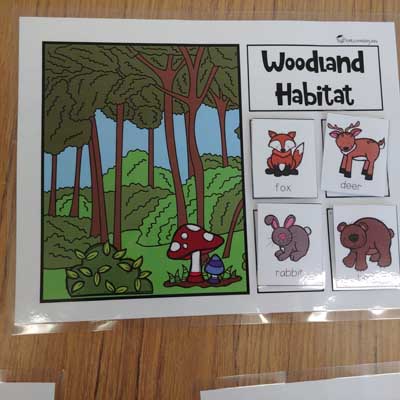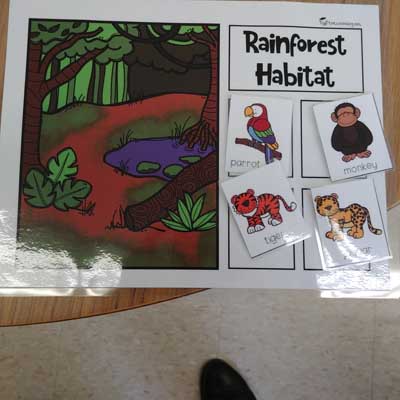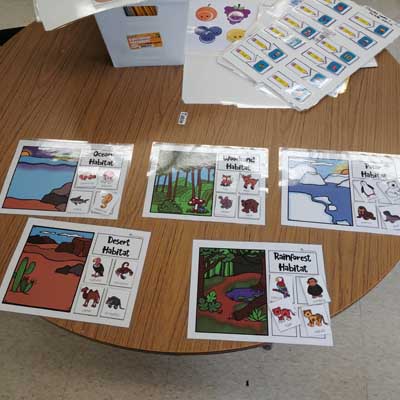Six months ago, when Mariana Schenkel started working with the preschool group, she noticed they couldn’t sit still for five minutes during circle time. The children were not connecting with the planned activities and were restless.
“It is typical to be able to hold a preschooler’s attention for around ten minutes. So, we thought something must be wrong—even our toddlers can sit for five minutes,” the ECE at St. George’s Centre in Guelph recalls. “We asked ourselves, ‘how we could make this time more relevant and interesting for the group and individual children?’”
Mariana and her colleague considered the children’s ages, developmental stages, and interests. They found that most ready-made materials cater to English speaking or Kindergarten-aged children. These are not suitable for their newcomer group.
“Our children enter the program with little English—and sometimes no language at all. And, there are a few with special needs,” relates Mariana. “Even among our preschoolers, ages and abilities differ between the older ones in the morning and the younger ones in the afternoon. We watch their cues and take into account development at both ends to present activities that we know they are capable of doing.“
They decided to visit their resource centre and use various supplies to create developmentally appropriate visual storyboards, games, and activities. Each one is chosen to spark the group’s curiosity and build on the children’s interests and abilities.
With online inspiration from sites like Pinterest, many of the materials are language and math based. Some have stories or songs with sequences, and children have to figure out what part comes next. Others have a word or letter missing and they have to guess what it is. Program favourites are the ideas that can extend beyond circle time. An example would be the animal habitats boards. Staff made six different animal habitats with four different animals each. Children work to consider where each would live and why.
The materials are a hit with the children. They immerse themselves and all of the children are interested in joining in at circle time. Afterwards, the resources are often set out on math and language tables where children work on them as individuals or in pairs. Or, they take them to the floor in larger groups. Sometimes, they ask for a previous activity that they liked, as staff keep all on file. To date, the program has over 50 handmade activities.
Custom materials are flexible enough to adjust to the changing interests of the group, and respond to children with special needs. Some are tailor made to encourage children to remain in the circle and be part of the group, even if they are not fully engaged in the larger activity.
The strong visual aspect of the resources serves to break the language barrier and encourage development. It has given the children greater confidence and familiarity with language. “A few of the kids are very quiet—often because they have less language than others—and they don’t speak unless they have a need,” relates Mariana. “These activities give them a reason to express themselves and get involved. Since they don’t want to miss their turn, they have to attempt to speak. We noticed it was during this time when certain children started talking—and now they don’t stop.”
Beyond these custom-created materials, the program uses other types of visual cues to make connections. For example, there are pictures on shelves showing where each toy goes, so children know where to put them back. Even the classroom rules are explained through visuals displayed on the wall. This has fostered independence, responsibility, and literacy. Also, decorations feature individual children’s names and pictures, as well as images of all of them engaged in activities, to help the children feel at home.
Likewise, connections with parents are important to staff. Typically, the entire family is learning English. Therefore, visuals play a role in many interactions. Aside from regular documentations, the program creates visual stories for display in hallways to show what the group is doing and where interests lie. Staff write something simple for parents and more complicated documentation that incorporates ELECT for other caregivers. In addition, the introduction of an iPad to the program gives parents a glimpse of their child’s day through videos.
“Families are enthusiastic to see exactly what interests their children, because they can mimic what we do here in their homes, ” explains Mariana. “When we connect with the parents, we can connect much better with the child–and that makes everyone more comfortable.”
Increased comfort gives children the confidence to thrive in the program and be ready when it comes time to start kindergarten.
Through visual connections, circle time has come full circle, so to speak.
Says Mariana, “Now, if we let them, they will sit for twenty minutes and still not want it to end.”

